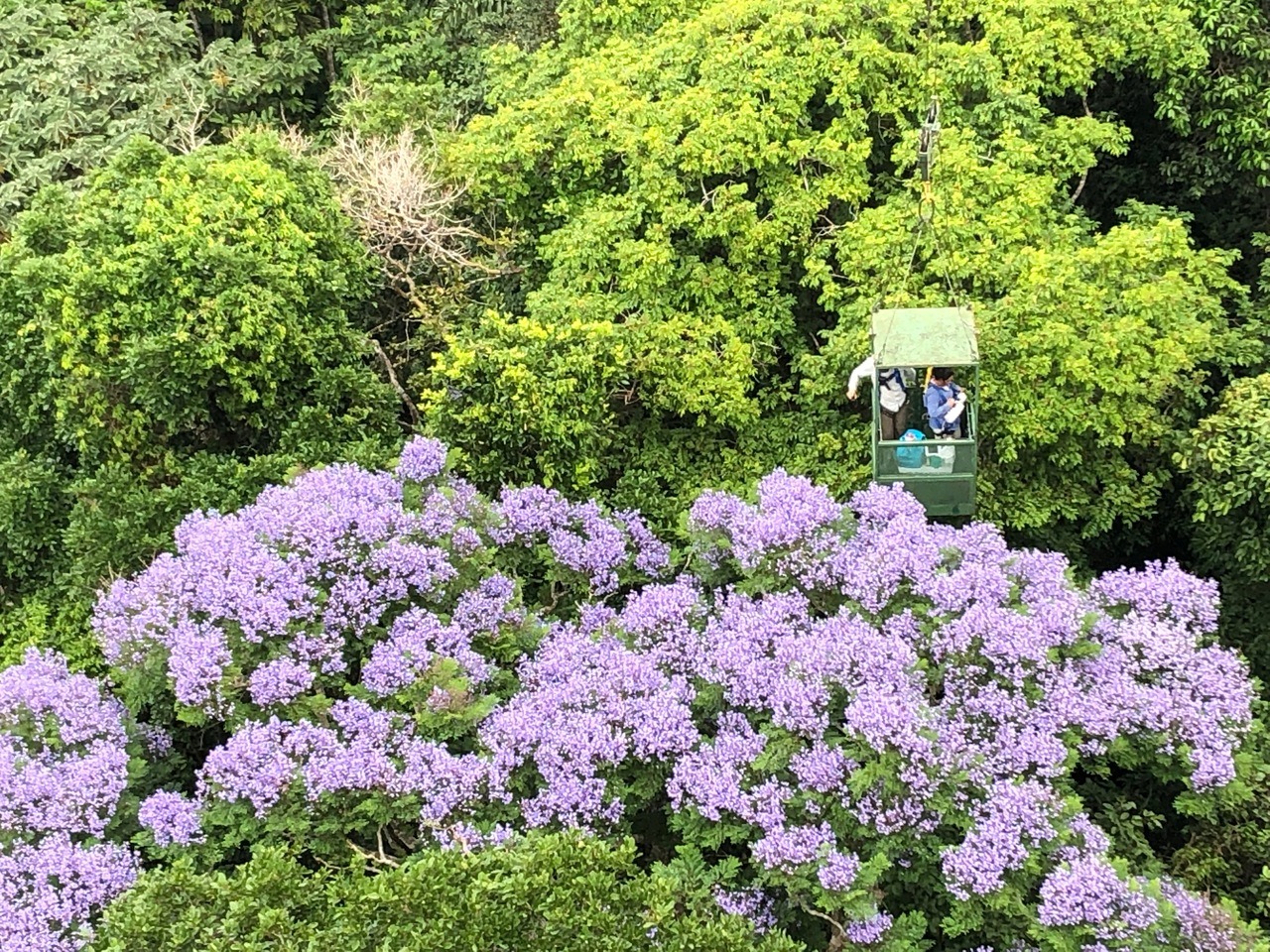(guest post via the American Geophysical Union blog)
Greetings from Panama!
Here is a snapshot of one day of nearly thirty of postdocs Dr. Hugo Candido and I (Dr. Luiza Aparecido) collecting gas exchange data from mature tropical trees at the STRI Sherman/San Lorenzo crane site in Panama. To compensate my fear of heights and vertigo (we were usually around 45 meters above the forest floor with constant windy conditions!), the dry season is also blooming season. So, measurements from that day were extra pleasant with that beautiful, blooming Jacaranda!
This field consisted of us taking photosynthesis, transpiration and stomatal conductance of 26 mature tropical trees from early morning until mid-afternoon during the dry season. Measurements were done using a portable photosynthesis system (LI6800, Li-Cor Inc. – as seen in the image). We also collected micrometerological data for that month and thermal images (A615, FLIR) of tree canopies to obtain their leaf temperature. We are investigating if tropical trees adopt different hydraulic strategies in response to drying, warmer conditions. Findings from this work will help improve current land surface models and stomatal regulation models under a changing environment. This work is a collaboration between Arizona State University (Dr. Luiza Aparecido, Dr. Benjamin Blonder), University of British Columbia (Dr. Hugo Candido, Dr. Sean Michaletz) and Smithsonian Tropical Research Institute (Dr. Martijn Slot, Dr. Klaus Winter and Dr. Brett Wolfe).
Stay tuned for our papers possibly coming out Spring/2020. For sure a submission to AGU 2019 Fall Meeting 😉
- Luiza Aparecido
Photo credit: Edwin Andrade, our fantastic crane operator and plant identifier!


